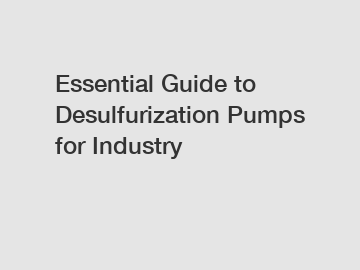https://www.miningmachinerys.com/productstags/gravel-crushing-jaw-crusher.html
Jaw crushers are essential machines in mining, construction, and aggregate industries, known for their ability to crush hard and abrasive materials. While they are highly efficient, operating a jaw crusher requires adhering to strict safety and operational protocols to ensure both the equipment's longevity and the safety of personnel. Below, we outline the necessary precautions to take when using a jaw crusher.
1. Understanding the Basics of a Jaw Crusher
Jaw crushers operate by using a moving jaw and a fixed jaw to create a V-shaped chamber where materials are crushed. They are primarily used for primary crushing, reducing large materials into smaller, manageable sizes for further processing. It is crucial to understand the basic operation principles to ensure safe and efficient use.
2. Personal Protective Equipment (PPE)
Personal Protective Equipment (PPE) is vital when operating a jaw crusher. Operators should always wear the following:
Hard hats: To protect against falling debris.
Safety goggles: To shield eyes from dust and particles.
Ear protection: Jaw crushers can be loud, so earplugs or earmuffs are necessary.
Gloves: To prevent hand injuries when handling materials.
Steel-toed boots: To protect feet from heavy objects.
3. Training and Certification
Proper training and certification are mandatory for anyone operating a jaw crusher. Operators should be well-versed in the equipment's functions, potential hazards, and emergency protocols. Regular refresher courses help maintain high safety standards and operational efficiency.
4. Pre-Operational Checks
Pre-operational checks are essential to ensure the jaw crusher is in good working condition before use. These checks include:
Inspecting the machine: Look for signs of wear, cracks, or damage.
Checking lubrication: Ensure all moving parts are adequately lubricated to prevent overheating and friction.
Verifying power connections: Ensure all electrical connections are secure and functioning correctly.
Testing safety mechanisms: Make sure all safety features are operational, including emergency stops and guards.
5. Loading the Jaw Crusher
Proper loading techniques are crucial to avoid blockages and uneven wear. When loading a jaw crusher:
Use appropriate machinery: Load materials using equipment like excavators or loaders to minimize the risk of injury.
Avoid overloading: Overloading the crusher can cause mechanical failure and pose safety risks. Follow manufacturer guidelines for load capacity.
Distribute materials evenly: Ensure materials are evenly distributed in the crusher to prevent imbalances and ensure efficient crushing.
Additional resources:The Advantages of Incorporating a Plate Chain Bucket Elevator into Your Business OperationHow does EPS Pre-Expander Machine Technology work?Should Sand Moving Machines Replace Manual Labor?Steel Sea Wall vs. Concrete Barriers: Coastal Defense ShowdownWhat Is Fumed Silica Used ForWhat Are the Key Benefits of Oil Seals?How to Choose High-Purity Nano-Silica Powder Effectively6. Monitoring During Operation
Constant monitoring during operation is necessary to identify any issues early and prevent accidents. Key monitoring practices include:
Watching for blockages: Regularly check for any obstructions in the crushing chamber and remove them promptly.
Listening for unusual noises: Unusual sounds can indicate mechanical issues or potential failures.
Checking discharge output: Monitor the size and consistency of the output to ensure the crusher is functioning correctly.
7. Maintenance and Inspection
Regular maintenance and inspection are critical to prolonging the life of the jaw crusher and ensuring safe operation. Maintenance tasks include:
Daily cleaning: Remove dust and debris from the machine daily to prevent build-up and potential malfunctions.
Scheduled inspections: Conduct detailed inspections periodically to check for wear and tear, and replace worn parts as necessary.
Lubrication schedule: Follow a strict lubrication schedule to keep all moving parts functioning smoothly.
Record-keeping: Maintain detailed records of all maintenance activities for future reference and compliance.
8. Emergency Procedures
Knowing how to respond to emergencies is crucial when operating a jaw crusher. Emergency procedures should include:
Immediate shutdown: In the event of a malfunction or safety hazard, shut down the machine immediately using the emergency stop button.
Evacuation plan: Have a clear evacuation plan in place for personnel to follow in case of an emergency.
First aid training: Ensure all operators are trained in basic first aid to handle injuries promptly.
9. Environmental Considerations
Operating a jaw crusher also involves being mindful of environmental factors. Important considerations include:
Dust suppression: Implement dust suppression techniques such as water sprays or dust collection systems to minimize airborne particles.
Noise control: Use sound barriers or enclosures to reduce noise pollution.
Waste management: Properly dispose of any waste materials to minimize environmental impact.
10. Compliance with Regulations
Compliance with industry regulations and safety standards is non-negotiable. Ensure that your operations adhere to all relevant guidelines, including:
OSHA standards: Follow Occupational Safety and Health Administration (OSHA) regulations for workplace safety.
Manufacturer’s guidelines: Adhere to the manufacturer's recommendations for safe operation and maintenance.
Local laws: Be aware of and comply with any local laws or regulations pertaining to mining and construction operations.
In conclusion, operating a jaw crusher requires meticulous attention to safety protocols and operational guidelines. By taking the necessary precautions, you can ensure the safety of your personnel and the efficient functioning of your equipment.
Additional resources:Maximizing Efficiency with Lamella Inclined Tube SettersKey Questions to Consider When Purchasing a Disc Diffuser ProductAdhesives For Ceramics - Studio Operations and Making WorkElectronic Grade Silica Sol vs. Regular Silica: Key Differences Explained4 Tips to Select the Perfect Wristband Teether4 Tips to Select the Perfect Cooling Tower Spray NozzleThe Benefits of Using Eco-Friendly Cleaning Products












Comments
All Comments ( 0 )